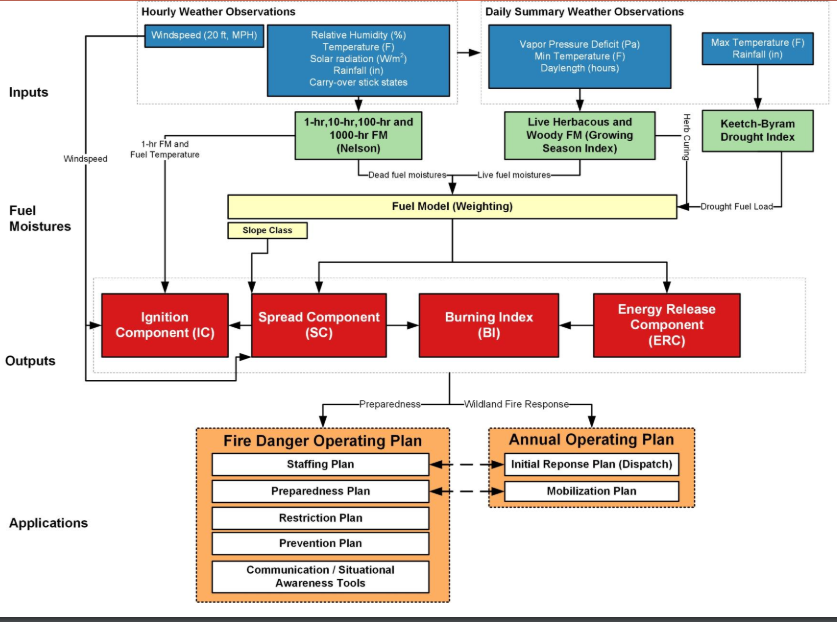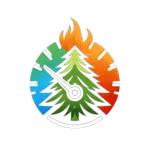Energy Release Component (ERC)
Based upon the estimated potential available energy released per unit area in the flaming zone of a fire. It is dependent upon the same fuel characteristics as the spread component (SC). The day to day variations of the ERC are caused by changes in the moisture contents of the various fuel classes, including the 1000 hour time lag class. ERC is derived from predictions of the rate of heat release per unit area during flaming combustion and the duration of the burning. Expressed in BTU's per square foot.Burning Index (BI)
A measure of fire intensity. BI combines the Spread Component and Energy Release Component to relate to the contribution of fire behavior to the effort of containing a fire. BI has no units, but in general it is 10 times the flame length of a fire.In the context of wildfires, the 90th percentile is the severest 10% of weather conditions. Percentiles are continuous values that can capture changes along the fire danger continuum. Fire managers divide the local fire danger continuum into discrete classes based on historical fire danger conditions.
Fire Danger Level: Low
When the fire danger is "low" it means that fuels do not ignite easily from small embers, but a more intense heat source, such as lightning, may start fires in duff or dry rotten wood. Fires in open, dry grasslands may burn easily a few hours after a rain, but most wood fires will spread slowly, creeping or smoldering. Control of fires is generally easy.
Fire Danger Level: Moderate
When the fire danger is "moderate" it means that fires can start from most accidental causes, but the number of fire starts is usually pretty low. If a fire does start in an open, dry grassland, it will burn and spread quickly on windy days. Most wood fires will spread slowly to moderately. Average fire intensity will be moderate except in heavy concentrations of fuel, which may burn hot. Fires are still not likely to become serious and are often easy to control.
Fire Danger Level: High
When the fire danger is "high", fires can start easily from most causes and small fuels (such as grasses and needles) will ignite readily. Unattended campfires and brush fires are likely to escape. Fires will spread easily, with some areas of high-intensity burning on slopes or concentrated fuels. Fires can become serious and difficult to control unless they are put out while they are still small.
Fire Danger Level: Very High
When the fire danger is "very high", fires will start easily from most causes. The fires will spread rapidly and have a quick increase in intensity, right after ignition. Small fires can quickly become large fires and exhibit extreme fire intensity, such as long-distance spotting and fire whirls. These fires can be difficult to control and will often become much larger and longer-lasting fires.
Fire Danger Level: Extreme
When the fire danger is "extreme", fires of all types start quickly and burn intensely. All fires are potentially serious and can spread very quickly with intense burning. Small fires become big fires much faster than at the "very high" level. Spot fires are probable, with long-distance spotting likely. These fires are very difficult to fight and may become very dangerous and often last for several days.
NFDRS Flowchart

